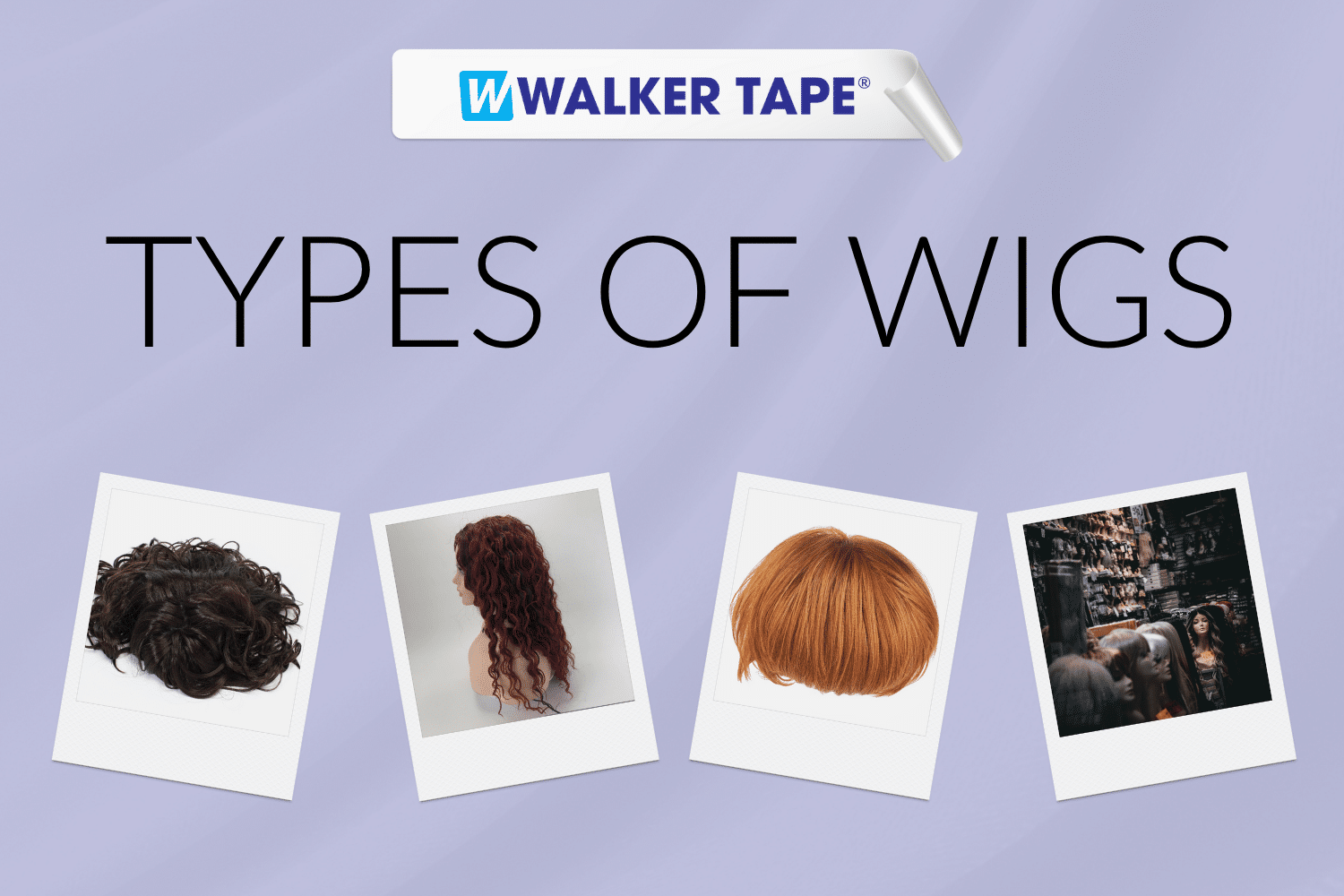
Types of Wigs
Getting into the hair system game can be a daunting task. There is just so much to know in terms of systems and system types, lingo, terminology, etc. In other words, it can get tough.
In order to help you, we wrote this handy blog. And by the end of it, you’ll know exactly what to look for when you start helping your client shop for hair systems.
Custom VS Stock
First, your client will need to decide if they’d like a stock made hair system or custom hair systems. Stock hair systems are pre-made, pre-styled, and generally one-size-fits-all options. The more affordable option, stock systems aren’t custom-fit for the wearer, but can be adjusted for a slight price increase.
Custom wigs are custom made specifically for their wearer. These systems generally fit and feel better than stock units, and better serve the individual needs of the hair system wearer. These tend to cost more than stock hair systems.
Types of Hair System Coverage
Most assume that a hair system covers the entire head/scalp, but there are hair systems for a variety of different hair loss stages – such as early hair loss, hair loss in only a specific area, etc. Those consist of:
- Topper: These types of systems are designed for those suffering from hair loss on the top of their head. Designed to cover the hair loss on the top of the scalp/head area.
- Frontal: These, if you haven’t already guessed, are designed to cover hair loss that is primarily at the front of scalp/forehead.
- Full Cap: Full cap hair systems are the hair systems that cover the entire scalp. These are best for those suffering from complete hair loss on the scalp and head.
Types of Hair System Bases
There are three main types of hair systems to choose from:
Polyurethane
Polyurethane (more commonly known as “Poly”) hair systems are made to look and fit in with your client’s skin and scalp for a more all-natural appearance. They can come in a variety of different thicknesses for the wearer to choose from. Though they are not as comfortable as lace-based hair systems.
Lace
Lace-based hair systems are generally the most comfortable hair system base type for wearers. They are built to be breathable, undetectable, and comfortable for clients to wear. On the other hand, they are more thin, more fragile, and more prone to damage than other hair system base types.
Monofilament
Monofilament, or mono for short, hair systems are a blend of both worlds when it comes to units. They combine the strength of poly systems with the softness of lace, and lead to an all-natural appearance – as if the hair is actually coming out of the scalp.
Mono bases offer several unique benefits that help with the all-natural look. They’re great for sensitive scalps, thanks to the breathability of the lace portion. And once it’s applied, the base blends in with wearer’s scalp for an even more realistic look and feel. Finally, because the hair is hand-tied to the base of the system, it creates the illusion that it’s growing directly from the scalp.
Types of Hair: Synthetic or Human
Believe it or not, not all hair systems are made with real hair. Some are made with synthetic hair, and both real and synthetic come with their own benefits:
- Human Hair: Made with actual hair, these types of systems give the most natural look and feel for wearers. However, human hair does require more styling and care than synthetic systems. And although they are the more expensive option, they can be worth the overall investment, as they can last over a year with proper care.
- Synthetic Hair: The less expensive option, synthetic hair is usually made from fine plastic fibers that mimic hair. They require little maintenance and can generally be worn as soon as they’re taken out of the package. Synthetic is also less durable than human hair, but can last 4-6 months with proper care.
If you have any questions on hair systems, hair system adhesives, or questions for Walker Tape in general, feel free to reach out to our Customer Service team at [email protected], or by phone at 1.800.759.5150.





I usually wear full ultra thin skin pieces, but sometimes the hairline doesn’t look good. I’ve looked at pictures of super fine Swiss lace and it seems like it’s kind of hit or miss. Sometimes the knots are visible and sometimes the lace is visible. I also wore a “Hollywood” lace a long time ago and the adhesive would seep through after awhile and foul the hair, which was annoying.
What’s the most realistic-looking option?
Hello!
That’s a great question. There are so many factors that can determine how natural a hair system may look. Typically, lace looks more natural than poly, but it seems you have tried various types of lace hair systems. Next, we’d recommend consulting a hair replacement stylist. They can really dig into hair type, hair thickness and hair system make-up to determine the best option for you personally.
Thank you!
Truly a great post. Thanks for such a great information.
Thanks for sharing the details.
Hi there,
I would like to train up to provide my clients with wig options. Where can i train in this?
Hello! While we do not offer training or education, Hairskeen and Jon Renau have training and certifications for hair replacement that are helpful. You can use our “Find a Salon/Distributor” tool to find more resources on the topic. We also recommend looking into your local area to see if any training is available.
If you have any additional questions, feel free to contact us. Happy Wednesday!
A really helpful breakdown of the different types of wigs! I especially appreciated the pros and cons listed for each type. It made it so much easier to understand what might work best for me. Thanks for making wig shopping a little less overwhelming!